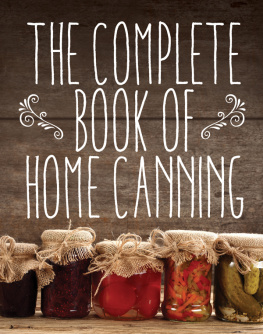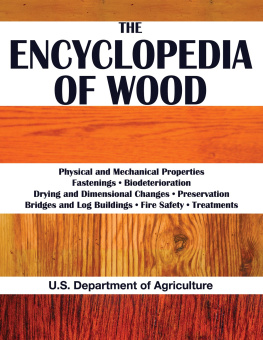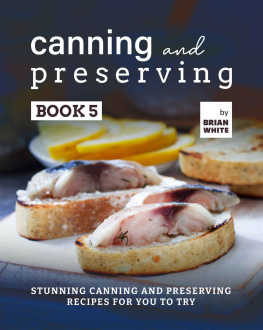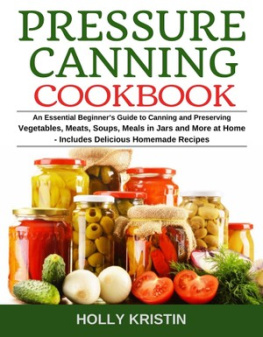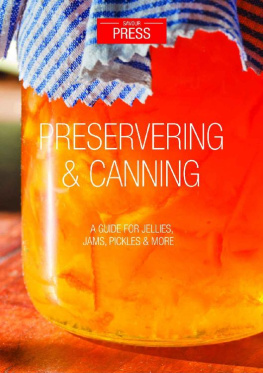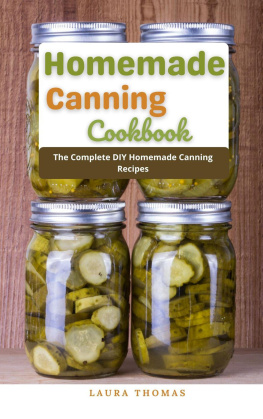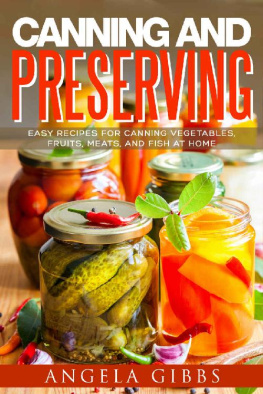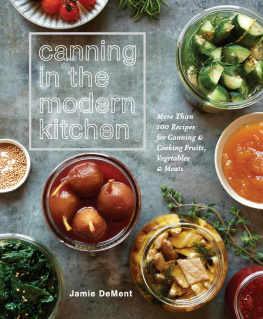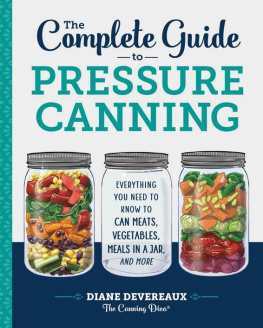First published in 2009 by the United States Department of Agriculture
First Skyhorse edition 2015
All rights reserved. No part of this book may be reproduced in any manner without the express written consent of the publisher, except in the case of brief excerpts in critical reviews or articles. All inquiries should be addressed to Skyhorse Publishing, 307 West 36th Street, 11th Floor, New York, NY 10018.
Skyhorse Publishing books may be purchased in bulk at special discounts for sales promotion, corporate gifts, fund-raising, or educational purposes. Special editions can also be created to specifications. For details, contact the Special Sales Department, Skyhorse Publishing, 307 West 36th Street, 11th Floor, New York, NY 10018 or .
Skyhorse and Skyhorse Publishing are registered trademarks of Skyhorse Publishing, Inc., a Delaware corporation.
Visit our website at www.skyhorsepublishing.com.
10 9 8 7 6 5 4 3 2 1
Library of Congress Cataloging-in-Publication Data is available on file.
Cover design by Anna Christian
Cover photo credit Thinkstock
Print ISBN: 978-1-63220-509-4
Ebook ISBN: 978-1-63220-886-6
Printed in China
Acknowledgments
The creation of an Extension Service Center for Excellence at the Penn State University in the 1980s made it possible to conduct the research necessary to revise four previously published bulletins for canning foods in the home. The Center was the cooperative effort of the Extension Service, Cooperative State Research Service, and the Penn State University with Gerald D. Kuhn, PhD, of the Penn State University as Director. A National Center for Home Food Processing and Preservation was established in 2000 as a cooperative effort of the National Institute of Food and Agriculture (formerly the Cooperative State Research, Education, and Extension Service) and the University of Georgia as the lead institution in a multi-state activity with Elizabeth L. Andress, PhD, as Project Director. This Center conducted research that made it possible to include some new products in this revised guide.
The Cooperative State Research, Education and Extension Service wishes to credit the primary development of this guide to Gerald D. Kuhn (Penn State University), Elizabeth L. Andress (University of Georgia), and Thomas S. Dimick (Penn State University). USDA staff who assisted in preparing the original Complete Guide to Home Canning include Milton P. Baldauf, Catherine E. Adams, Nancy T. Sowers, and Vincent G. Hughes. Others who have assisted in later revisions include Kenneth N. Hall (University of Connecticut), Thomas W. Poore (USDA), Judy A. Harrison, Elaine M. Dsa and Mark A. Harrison (all at the University of Georgia). Research for the smoked fish recommendation was conducted by Carolyn Raab and Ken Hilderbrand (Oregon State University) with partial funding from the OSU Extension Sea Grant Program. Research for the fish in quart jars recommendation was conducted by Kristy Long and Chuck Crapo (University of Alaska). Research for six of the salsa recommendations was conducted by Richard H. Dougherty and Virginia N. Hillers (Washington State University). The research on acidification of home canned Asian pears and figs was conducted by Margy Woodburn (Oregon State University). All have contributed significant ideas and time in making this guide a truly up-to-date research-based publication.
This project was partially funded through a grant from the National Integrated Food Safety Initiative (Grant No. 00-51110-9762) of the Cooperative State Research, Education, and Extension Service, U.S. Department of Agriculture.
December 2009
Complete Guide to Home Canning
Agriculture Information Bulletin No. 539
Caution: All home-canned foods should be canned according to the procedures in this Guide. Low-acid and tomato foods not canned according to the recommendations in this publication or according to other USDA-endorsed recommendations present a risk of botulism. If it is possible that any deviation from the USDA-endorsed methods occurred, to prevent the risk of botulism, low-acid and tomato foods should be boiled in a saucepan before consuming even if you detect no signs of spoilage. At altitudes below 1,000 ft, boil foods for 10 minutes. Add an additional minute of boiling time for each additional 1,000 ft elevation. However, this is not intended to serve as a recommendation for consuming foods known to be significantly underprocessed according to current standards and recommended methods. It is not a guarantee that all possible defects and hazards with non-recommended methods can be overcome by this boiling process. The recommendation is to only can low-acid and tomato foods according to the procedures in this Guide.
Reference to commercial products and services is made with the understanding that no discrimination is intended and no endorsement by the U.S. Department of Agriculture is implied. Clear Jel and Splenda are mentioned because they are the only suitable products presently available to the general public for the stated purposes in given products.
The U.S. Department of Agriculture (USDA) prohibits discrimination in all its programs and activities on the basis of race, color, national origin, age, disability, and where applicable, sex, marital status, familial status, parental status, religion, sexual orientation, genetic information, political beliefs, reprisal, or because all or part of an individuals income is derived from any public assistance program. (Not all prohibited bases apply to all programs.) Persons with disabilities who require alternative means for communication of program information (Braille, large print, audiotape, etc.) should contact USDAs TARGET Center at 202-720-2600 (voice and TDD). To file a complaint of discrimination, write to USDA, Director, Office of Civil Rights, 1400 Independence Avenue, S.W., Washington, DC 20250-9410, or call 800-795-3272 (voice) or 202-720-6382 (TDD). USDA is an equal opportunity provider and employer.
Reprinted August 2009
Preface
Home canning has changed greatly in the 180 years since it was introduced as a way to preserve food. Scientists have found ways to produce safer, higher quality products. The first part of this publication explains the scientific principles on which canning techniques are based, discusses canning equipment, and describes the proper use of jars and lids. It describes basic canning ingredients and procedures and how to use them to achieve safe, high-quality canned products. Finally, it helps you decide whether or not and how much to can.
The second part of this publication is a series of canning guides for specific foods. These guides offer detailed directions for making sugar syrups; and for canning fruits and fruit products, tomatoes and tomato products, vegetables, red meats, poultry, seafoods, and pickles and relishes. Handy guidelines for choosing the right quantities and quality of raw foods accompany each set of directions for fruits, tomatoes, and vegetables. Most recipes are designed to yield a full canner load of pints or quarts. Finally, processing adjustments for altitudes above sea level are given for each food.
This publication contains many new research-based recommendations for canning safer and better quality food at home. It is an invaluable resource book for persons who are canning food for the first time. Experienced canners will find updated information to help them improve their canning practices.
Research is continually being conducted in areas that affect food preservation recommendations. Make sure your food preservation information is always current with up-to-date tested guidelines.

